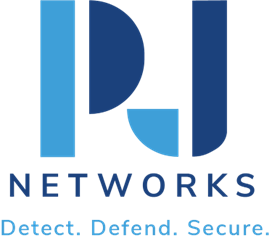What We Can Learn From Zero Trust Architecture For the Modern Enterprise
Cyber threats are always changing, and businesses need to be able to update their security strategies in order to protect their work and resources. Zero Trust Architecture ZTA is one of the most successful models that has emerged from this landscape, which brings a new paradigm to fix and address the many problems in traditional security models. In an effort to answer this question, we will use this blog post to conduct a shallow dive into key components of Zero Trust with a lens towards how they enable organizations to live up to their side of the bargain in order to implement stringent access controls for everyone, ensure continual monitoring and enforce the efficacy of network security posture.
What is Zero Trust?
Zero Trust is a cybersecurity concept based on the idea of never trust, always verify. While traditional security models assume anything within an organization’s network is secure, Zero Trust treats everything as a potential threat, regardless of whether it comes from the outside or inside. The assumption this requires is a complete inversion in the way we verify, now all users and devices need to be fully authenticated, authorized and continuously revalidated regardless of location before access can or is allowed to happen.
Zero Trust as a philosophy is based on the idea that all access to any given network, system or application should be verified at all times, in real time. This model includes things like micro-segmentation, making the surface area of the network smaller by segmenting it into tiny slices, and least privilege access, shortening time to threat window by forcing users to connect only to resources they need for their roles.
Zero Trust vs Traditional Security Models
In the classic security models, we have created a citadel around our network with firewalls and intrusion detection systems dedicated to stopping any unauthorized entrance. Inside of the perimeter then, users and devices may be assumed trusted by default leaving that particular opening ripe for exploitation should malicious actors get past initial defenses. This perimeter-based security model is less than ideal in modern computing, with remote end users, public cloud services, and bring-your-own-device BYOD policies standard.
Zero Trust Architecture, on the other hand, acknowledges that no matter how strong the controls are on a perimeter defense, endpoints remain vulnerable. Also, each access request is considered as a threat vector and treated as a requirement of the attack strategy whether it comes from inside or outside in network. Zero Trust accomplishes this by using checkpoints for verification across the network instead of being reliant on perimeter defenses making it a more defense-in-depth security strategy. Enhances traditional models — Overcomes challenges with traditional models by leveraging ongoing validation and real-time monitoring and adaptive security policy enforcement to more effectively protect network safety for modern enterprises.
How to Get Zero Trust in Place at Your Organization
Encode the Zero Trust strategy to phases in your enterprise; Below are essential steps to take to set the foundation of a Zero Trust done properly:
- Determine the Current Security Posture With a Detailed Assessment Assess and Plan: This involves carefully analyzing your security status, studying vulnerabilities, strengths, etc. Create a comprehensive Zero Trust plan that consistency your business goals.
- Identity and Access Management IAM: Enforce stringent IAM controls such as multi-factor authentication MFA, role-based access controls RBAC, and ongoing user validation to increase security of the network.
- Micro-Segmentation: Separate the network into distinct zones or segments in order to contain the movement of genuine threats. Use segment-based and context-aware policies to appropriately allow access to the network.
- Keep an Eye on Things: Employ real-time monitoring to watch out for any network behavior that may seem abnormal. Utilize AI and machine learning to improve threat detection and response.
- Safeguard Endpoints: Use Endpoint detection and response EDR solutions that secure all the devices connecting to your network, following all of your security policies.
- Zero Trust Policies and Training: Create and enforce strict security policies and conduct regular training so that your staff are educated on Zero Trust principles
Zero Trust Benefits for Modern Enterprises
Zero Trust Architecture brings multiple advantages to organizations, enabling current entities to improve network security and reduce potential risks from rapidly increasing cyber threats:
- Enhanced Security Posture: With perpetual permission and user behavior evaluations, Zero Trust yields a strong security posture that reduces exposure to vulnerabilities and anticipates threats before they have the chance to target weaknesses.
- Visibility and Control: Including a continuous security framework, logging that lets business know who has access to what resources as well as other features is essential. Increased awareness leads to faster responses to incidents or leaks of information.
- Fewer Breaches: Because Zero Trust makes no assumptions of implicit trust and instead demands verification at every access point, it provides key defensive layers against cyber intrusions that can lead to data breaches.
- Adaptability to New Threats: Zero Trust makes it easier for new security technologies and practices to be implemented, helping companies remain resilient in the face of changing threats and mandates.
- Better Compliance: Compliance with data-security provisions of numerous regulatory frameworks requires a tight security regime. Using Zero Trust: This alignment with compliance standards ends up saving organizations from fines when data breaches happen.
So, to wrap it up: Zero Trust Architecture as an enterprise security model turns things upside down from the in-out mentality. It leaves verification, segmentation and continuous monitoring as central elements. While organizations wade through the dirty waters of cybersecurity threats, embracing Zero Trust principles considerable fortifies their network security frameworks and enhances security in a perilous digital ecosystem. This mindset will prepare you to not only defend your business against current threats but to anticipate incoming cybersecurity situations.
